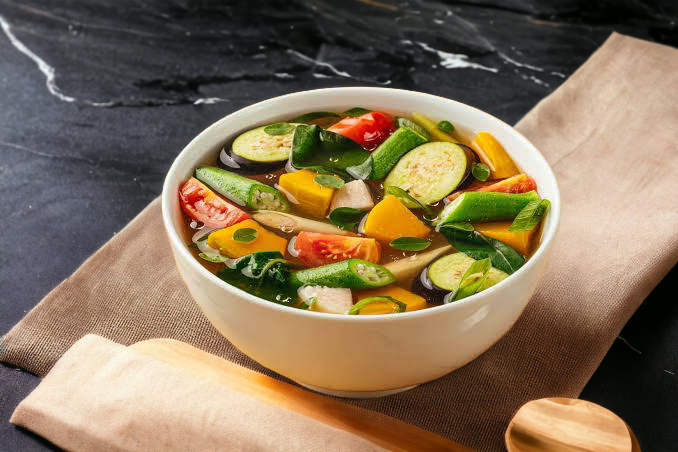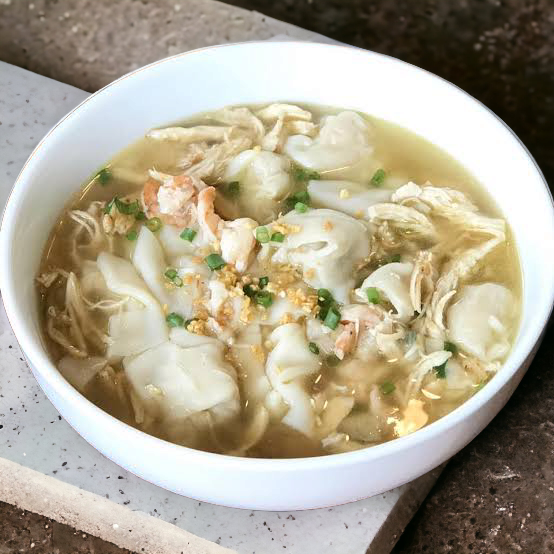Learn the secrets of cooking tender and flavorful Steamed Maya-Maya, a popular fish dish in the Philippines. This step-by-step guide will take you through the process of preparing this mouthwatering delight using fresh ingredients, delightful spices, and expert techniques. Get ready to impress your family and friends with your culinary skills as you create a delightful seafood masterpiece!
Introduction:
Welcome to the world of culinary delights! In this blog post, we're going to dive into the enticing realm of cooking Steamed Maya-Maya, a traditional and scrumptious Filipino fish dish. The combination of succulent snapper, aromatic herbs, and flavorsome spices is sure to stimulate your taste buds and transport you to tropical shores. So, roll up your sleeves, put on your apron, and let's get started on this delicious adventure!
1: Gathering the Ingredients
Before we embark on our cooking journey, let's gather all the fresh ingredients together. Here's what you'll need:
- 0.75 kg Snapper
- 2 pieces Ginger
- 1 piece Onion
- 4 cloves Garlic
- 0.5 cup Water
- 2 tbsp Soy Cooking and Seasoning Sauce
- 2 tsp Sesame Oil
- 1 tbsp Brown Sugar
- 3 sprig Cilantro
- 1 stalk Scallion
It's important to use fresh and high-quality ingredients to ensure the best possible flavors. Head to your local market or fishmonger to source the freshest Maya-Maya (Snapper) available. Remember, the quality of the fish is integral to the overall taste of your dish!
2: Preparing the Ingredients
Properly preparing the ingredients is crucial to achieving a delectable outcome. Let's start by cleaning and preparing our fish.
Begin by rinsing the Snapper under cold water to remove any impurities. Pat it dry with paper towels and set it aside. Next, peel and slice the ginger into thin strips. Finely chop the onion, garlic, cilantro, and scallion. Now that our ingredients are nicely prepared, we can move on to the next step.
3: Setting Up the Steaming Equipment
To cook Steamed Maya-Maya to perfection, you'll need a steaming setup. If you have a bamboo or metal steamer, that works perfectly. Otherwise, a regular steamer pot with a rack will do the job just fine.
Fill the pot with about an inch of water and bring it to a boil. While the water is heating up, let's move on to marinating our fish.
4: Marinating the Fish
Marinating the fish is the key to infusing it with incredible flavors. In a bowl, combine the soy cooking and seasoning sauce, sesame oil, brown sugar, chopped garlic, and half of the chopped ginger. Mix the ingredients together until they form a well-combined marinade.
Place the snapper on a plate or a shallow dish, then pour the marinade over it, ensuring that the fish is evenly coated. Sprinkle the remaining ginger on top of the fish, and let it marinate for about 20 minutes. This will allow the flavors to permeate the fish, enhancing its taste and tenderness.
5: Assembling the Steamer
With the marinade working its magic on the fish, let's assemble our steamer. Place the fish on a heatproof plate or dish that will fit inside your steamer. Make sure to leave some space around the fish to allow steam circulation.
Once the water in the pot is boiling, carefully place the dish with the marinated fish into the steamer. Cover the steamer tightly to trap the steam and start the cooking process. Steaming Maya-Maya gently allows the fish to retain its moistness while the flavors meld together beautifully.
6: Steaming the Maya-Maya
Now that the fish is nestled comfortably in the steamer, it's time to let the magic happen. Steam it on medium-high heat for about 15-20 minutes, or until the fish turns opaque and easily flakes with a fork. Avoid overcooking the fish to retain its tenderness and ensure that it doesn't become dry.
While the fish is steaming, prepare the flavorful garnish.
7: Preparing the Garnish
To complement the delicate flavors of the Steamed Maya-Maya, let's prepare a refreshing garnish. Finely chop some cilantro and thinly slice the scallions. These vibrant green additions will add a burst of freshness to the dish and enhance the visual appeal.
Once you've finished preparing the garnish, your perfectly steamed Maya-Maya should be ready, tempting you with its enticing aromas.
8: Serving the Steamed Maya-Maya
With the fish cooked to perfection, it's time to plate up this delectable dish. Gently transfer the steamed fish to a serving platter, retaining its shape as much as possible. Drizzle the remaining marinade over the fish, allowing its rich flavors to mingle.
Sprinkle the freshly chopped cilantro and sliced scallions on top for that burst of freshness. Now, take a step back and admire your culinary masterpiece!
9: Pairing and Enjoying the Delight
Steamed Maya-Maya is wonderfully versatile and pairs well with various side dishes. Serve it with steamed jasmine rice and stir-fried vegetables, such as bok choy or Chinese broccoli, to create a well-rounded meal. The delicate flavors of the fish will blend harmoniously with the vibrant accompaniments.
As you take your first bite, savor the rich, delicate flavors of the moist and flaky fish. The tender flesh, infused with the aromatic ginger and the savory nuances of the marinade, is a true delight for seafood lovers.
Final Thoughts
Congrats! You've successfully mastered the art of cooking Steamed Maya-Maya. With its simple yet refined flavors, this dish is sure to become a favorite not only in your kitchen but among family and friends as well. Remember, practice makes perfect, so don't be afraid to experiment with the marinade or try different garnishes to spice up your culinary adventures.
So, gather your loved ones, share this delightful dish, and enjoy the pleasure of savoring Steamed Maya-Maya together. Happy cooking!















